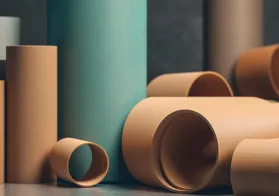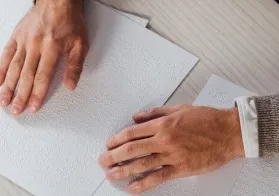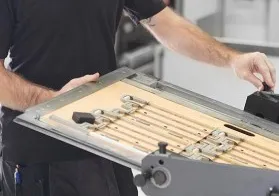
Top Articles
Accessibility through die-cutting - how Braille is printed
The tactile writing system invented by Louis Braille, which is still in use today, is referred to as Braille. It is based on a system of raised dots. The coded information is embossed on paper or packaging using a special Braille printer. For various applications such as medicine packaging, labelling in Braille with important information is required by law.
Punching processes at a glance: Rotary die-cutting vs. flatbed die-cutting
Die-cutting is a separation process that is used, among other things, in the production of labels or corrugated cardboard packaging. A distinction is made between rotary die-cutting and flatbed die-cutting. Both variants offer advantages and disadvantages and are partly suitable for different fields of application.
Technical terms explained: What does creasing mean?
Creasing is an important process in the packaging industry. Paper or cardboard materials are given a defined, linear notch by creasing. The material can then be folded more easily along the creasing.
Topic related articles
Labels Winding direction
In addition to the roll core, the carrier material and the label type, the winding direction is also an important factor for the correct dispensing of labels.
Roll cores for labels
Roll labels without a roll core are hard to imagine - the round label carriers offer a wide range of dispensing options thanks to their different core diameters.
Accessibility through die-cutting - how Braille is printed
The tactile writing system invented by Louis Braille, which is still in use today, is referred to as Braille. It is based on a system of raised dots. The coded information is embossed on paper or packaging using a special Braille printer. For various applications such as medicine packaging, labelling in Braille with important information is required by law.
Punching processes at a glance: Rotary die-cutting vs. flatbed die-cutting
Die-cutting is a separation process that is used, among other things, in the production of labels or corrugated cardboard packaging. A distinction is made between rotary die-cutting and flatbed die-cutting. Both variants offer advantages and disadvantages and are partly suitable for different fields of application.











